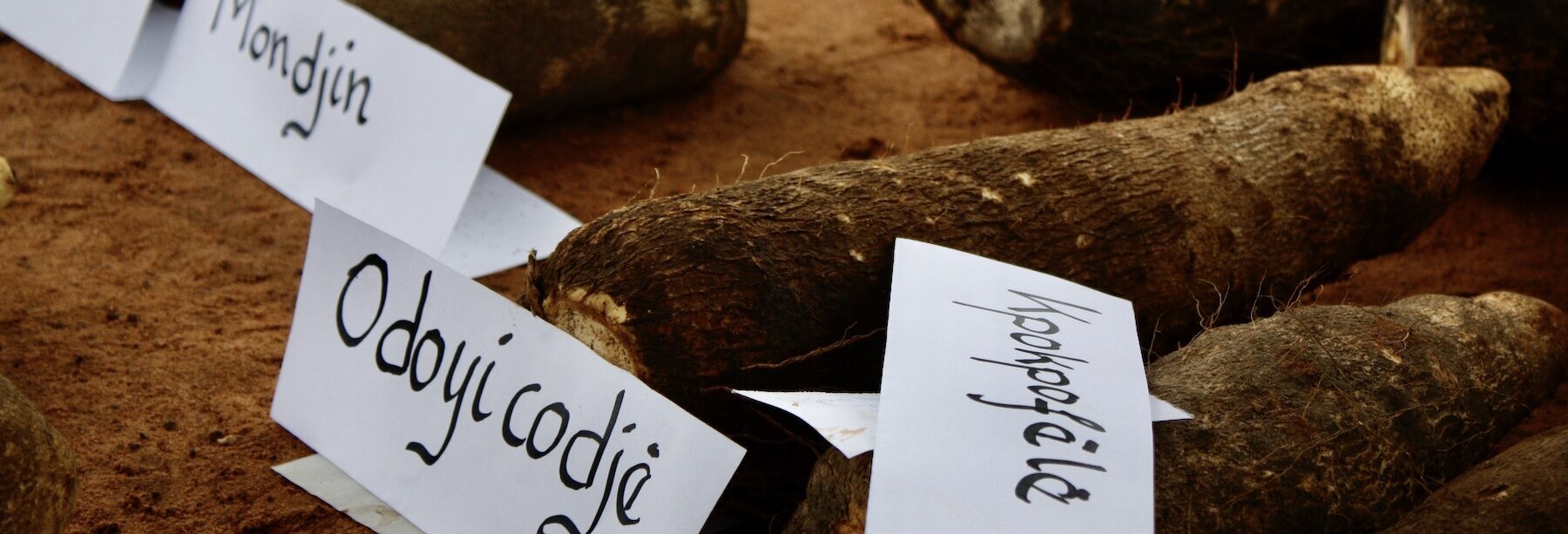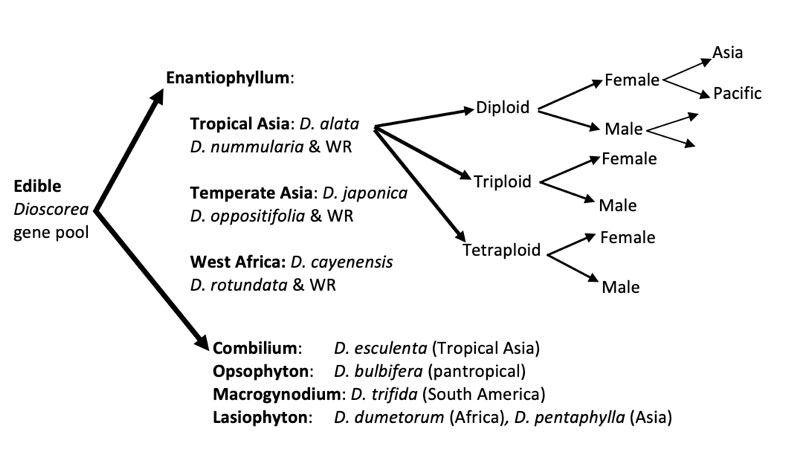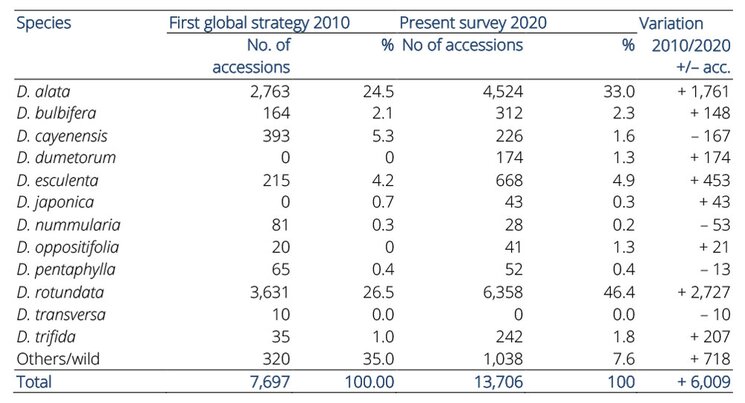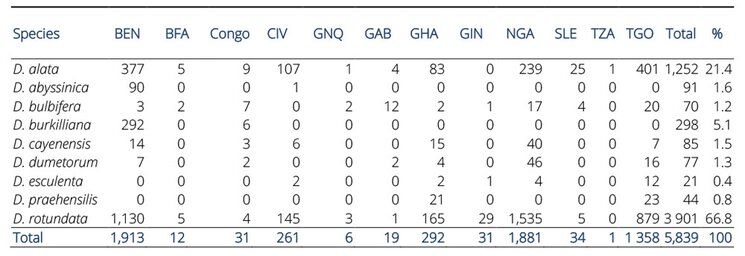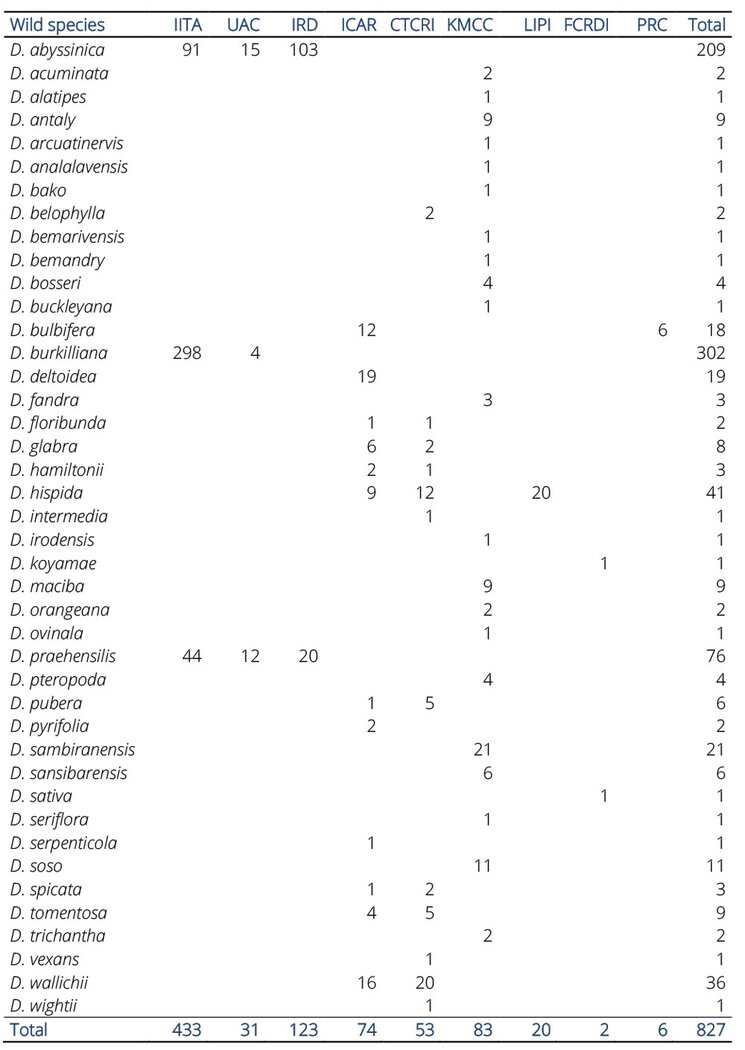Global Strategy for the Conservation and Use of Yam
Global strategy for the conservation and use of yam genetic resources was published in 2021 (Global Crop Diversity Trust 2021). This document, developed with the input of a large number of experts, aims to provide a framework for the efficient conservation and effective use of globally important collections of yam genetic resources. This webpage provides a summary of some of the its key findings and of the recommendations for priority actions.
Diversity structure of the edible Dioscorea gene pool
Diversity structure of the edible Dioscorea gene pool. Within the Enantiophyllum section, three gene pools are identified. The major species (greater yam and Guinea yams) belong to two distinct geographic gene pools (West Africa and tropical Asia). Only the stratification of six groups of D. alata is shown. The same hierarchical approach, based on ploidy level, sex and region of origin, can be used for other species. Within each subgroup, tuber shape and chemotype can be used for further stratification. WR = wild relative
Ex situ collections
Overview of ex situ collections in terms of their composition and type of germplasm are shown in the tables below. The data was collected through a survey conducted in 2020.
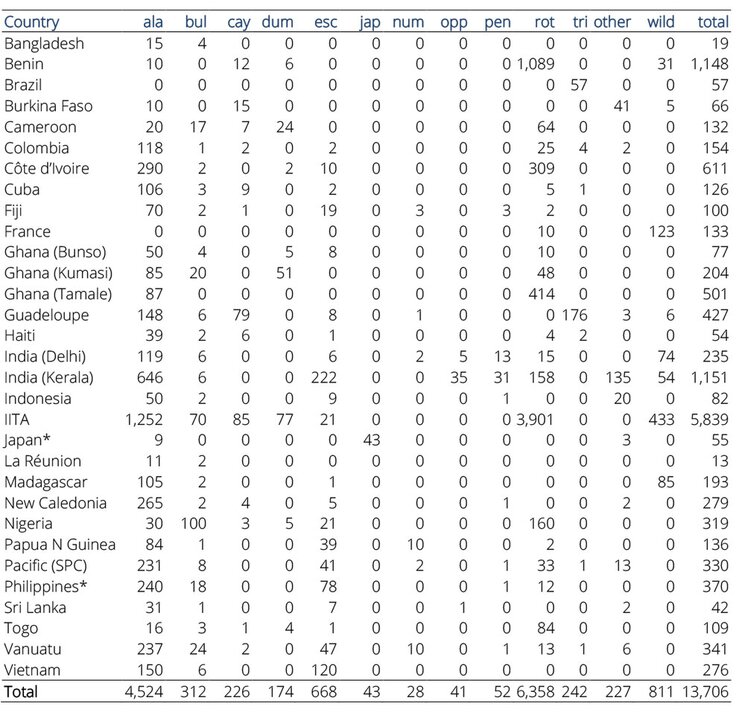
Number of accessions in each country collection by Dioscorea spp., from survey responses.
Key: alata: ala; bulbifera: bul; cayenensis: cay; dumetorum: dum; esculenta: esc; japonica: jap;
nummularia: num; oppositifolia: opp; pentaphylla: pen; rotundata: rot; trifida: tri; others: other; wild
relatives: wild); * Information retrieved from institution’s website; the questionnaire was not returned.
Characterization and evaluation data available
Key collections
Major institutions that preserve and use edible Dioscorea germplasm.
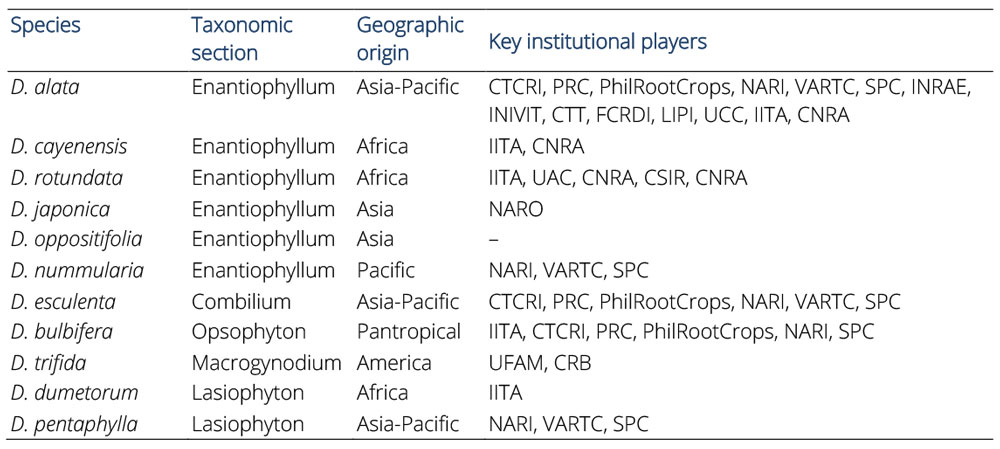
Recommendations for priority actions
This global strategy proposes a threefold approach:
1. To stratify D. alata, D. rotundata and D. cayenensis germplasm based on ploidy and sex and to detect duplicates
2. To compose elite subsets for each Dioscorea species (major and minor species) comprising elite cultivars.
3. To collect, exchange and preserve true seeds from wild relatives and selected cultivars to broaden the genetic base of existing collections for future use in breeding programs.
Priorities activities:
1. Conservation
1.1. Stratification
- Carry out molecular characterization of germplasm to rationalize collections based on species, ploidy levels and sex (cytometry, chromosome counting and GBS).
- Identify duplicates to downsize the international collection and national collections and improve conservation through characterization of accessions.
- Provide short-term support to national programs for ex situ field collection maintenance or in vitro conservation of base collections.
1.2. Elite subsets
-
Conduct research to develop a reliable cryopreservation protocol for yam to preserve a elite subset of each species.
-
Validate international elite subsets for each species using standardized molecular markers to identify duplicates.
-
Ensure safety duplication of yam elite subsets in different hubs (i.e. genebanks).
1.3. Seed conservation
-
Research induction of flowering.
-
Research true botanical seed conservation for selected elite genotypes.
-
Collect true botanical seeds and develop long-term storage techniques for wild relatives.
2. Characterization and evaluation
2.1. Ploidy level groups
- After rational stratification based on ploidy and sex, conduct characterization, evaluation and selection of germplasm currently available, for further stratification based on geographic origins within countries.
2.2. Morphological and tuber quality subgroups
- Reorganize collections into subgroups, especially among diploids, based on maturity, tuber shape, oxidation, flesh color; investigate relationships among genotypes, chemotypes and organoleptic properties.
3. Exchange of germplasm
- Set up optimized virus-cleaning protocols according to virus–host interaction.
- Develop virus-indexing capacity within regions.
- Exchange “clean” material within and outside regions.
- Convene a virtual meeting (and/or email discussion group) to update safe transfer guidelines.
- Monitor sanitized selected yam clones after field release.
4. Breeding, genetic improvement and use
- Ensure sustainability of breeding programs in Africa, India, Vanuatu and Guadeloupe.
- Support the development of user-friendly online training tools (e.g. short videos) on yam breeding.
- Develop the international exchange of true seeds between these programs.
- Strengthen coordination among conservation and breeding programs in West Africa.
Partners and donor
The development of this crop conservation strategy was funded by the German Federal Ministry of Food and Agriculture (BMEL) as part of the three-year project led by the Crop Trust: Breathing New Life into the Global Crop Conservation Strategies: Providing an Evidence Base for the Global System of Ex Situ Conservation of Crop Diversity. The Crop Trust also cooperated with the Secretariat of The International Treaty on Plant Genetic Resources for Food and Agriculture (ITPGRFA) in the development of this document.




